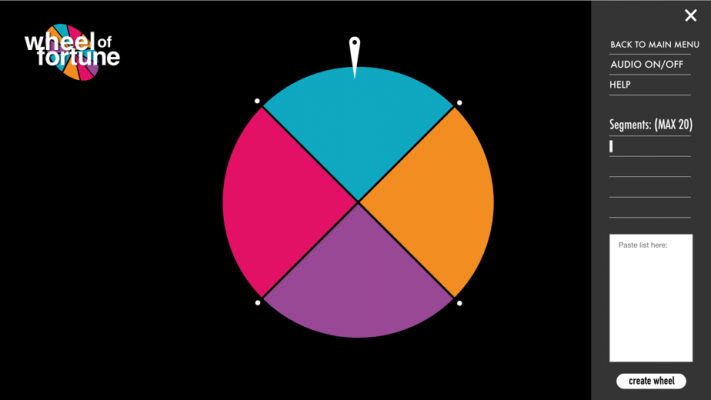Using gamification effectively in the virtual classroom to enhance learning
By Erik Funke
Gamification or game-based learning describes the use of games and/or playful elements in the teaching/learning context. This is generally understood to mean solving quizzes or collecting points or badges. However, entire learning games can also be integrated into training situations. Studies show that integrating learning games or game-like elements into training has positive effects on learning engagement, cognition, motivation, and collaboration among learners. In addition, learning outcomes such as problem solving, creativity, critical thinking or decision making are achieved [1]. When learning formats also evoke positive emotions such as fun, curiosity, and joy, it enhances the learning process [2] and has a positive impact on the design and delivery of training.
These benefits can be brought to the virtual classroom. For example, gamification can be used in the form of a playful introduction to the training that invites reflection and/or activation. This serves as a warm-up for the training as well as for the game situation and involves the participants directly and actively in the training event. This method is particularly suitable for overcoming the reticence and passivity often observed in virtual classroom training and for involving learners from the outset.
An example of this is the online game Wheel of Fortune, which consists of a spinning wheel with different categories. With this online tool, the number of categories as well as the categories themselves can be customized by the trainer in advance of the virtual classroom and thus the wheel can be adapted to the target group. The next step is to develop appropriate questions. It is advisable to take into account the context of the training or the training topic and the target group so that the purpose of the game becomes clear to the learners. For example, in the context of professional driver training, the online game could be used as follows:

- Wheel categories that can be entered via the online tool Wheel of Fortune: 1980 - 1990, 1990 - 2000, 2000 - 2010, 2010 - 2020
- Question for the participants: How long have you been a professional driver?
- Allocation to learners: If your category (decade) was randomly selected by the wheel, please activate the microphone and state the exact year you started working. Alternatively, you can use the chat function to communicate the year.
- The wheel is spun by the trainer using the online tool. All categories are selected in random order. Categories already selected will disappear from the wheel and will not be selected again.
- The tool can also be used to play several rounds in a row with differently designed wheels and questions. Typically, 3 to 5 rounds are recommended.
This also has the advantage that the trainers can learn more about the participants through the game-based approach, for example, about their work experience and previous knowledge.
There are many different ways to start a training in a playful way. Whether using free online tools or other variations such as whiteboards, it is important to get learners actively involved in the learning process. This promotes the transfer of learning, knowledge and practice and thus ensures sustainable learning success [3]. The use of playful elements can also increase the effectiveness of training. This applies not only to the introduction to the training, but also to the further course of a virtual classroom training. A number of quiz tools such as Bingo or the card game Pitstop can be used for professional drivers. Trainers can also use these tools at their discretion and in a way that is appropriate for the target group and the training.

To support the playful approach in training, the trainer acts as a learning guide or neutral game facilitator. In this role, the trainer explains the game and its rules and moderates the game. In doing so, the trainer should motivate the participants and reduce their initial fear of contact in order to use the full potential of the game as a resource for social, interactive and game-based learning.
When using gamification in the virtual classroom, less is more. In most cases, one or two games in a half-day virtual classroom training session will suffice. The contextual relevance to the training topic and the learner's work environment is essential. Playing games for the sake of playing games is not conducive to learning; the purpose of the game must be clear to the learners at all times. It is also advisable not to use a wide variety of different tools and games in the training. This can confuse the learners as they have to adapt to different game situations and rules. It is advisable to focus on one or two game tools and use them several times during the training. In this way, both the learners and the trainers in their role as game facilitators will become familiar with the game. Trainers should focus more on the quality and relevance of the quiz or exercise questions and use gamification as a targeted way to create positive learning effects and emotions in the virtual classroom.
[1] Quian, M., Clark, K. R., (2016). Game-based Learning and 21st century skills: A review of recent research, Computer in Human Behavior.
[2] Mullins, J. K. & Sabherwal, R. (2018). Beyond Enjoyment: A Cognitive-Emotional Perspective of Gamication. In Proceedings of the 51st Hawaii International Conference on System Sciences (S. 1237–1246). Honolulu: HCISS.
[3] Schmidt-Hertha, B. (2018). Bildung im Erwachsenenalter. In R. Tippelt & B. Schmidt-Hertha (Hrsg.), Handbuch Bildungsforschung (S. 827–844), Wiesbaden: Springer Reference Sozialwissenschaften. https://doi.org/10.1007/978-3-531-19981-8_3
